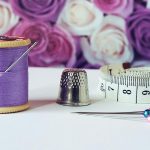When you think about sustainable fashion, it's easy to get lost in the myriad of choices and brands. However, pinpointing the intersection of precision design and eco-friendly practices reveals a clear path toward making informed decisions. By focusing on innovative materials and modular designs, you can create a wardrobe that's not only stylish but also responsible. But what does this really mean for your everyday choices, and how can you ensure that your fashion decisions contribute positively to the environment? The answers might surprise you.
Table of Contents
Understanding Sustainable Fashion
Sustainable fashion focuses on creating clothing in ways that are environmentally friendly and socially responsible. You're probably aware that the fast fashion industry has a significant impact on our planet, from waste generation to resource depletion. This is where sustainable fashion comes in. It emphasizes the use of eco-friendly materials, ethical production processes, and fair labor practices.
When you choose sustainable fashion, you're not just making a style statement; you're supporting a movement that prioritizes the well-being of our environment and the people involved in the clothing industry. You'll find that sustainable brands often utilize organic cotton, recycled fabrics, and non-toxic dyes, which not only reduce harm to the planet but also promote healthier options for consumers.
Moreover, sustainable fashion encourages you to rethink your purchasing habits. Instead of buying numerous trendy pieces, you can invest in high-quality, timeless items that last longer. By doing so, you contribute to reducing waste and promoting a more circular economy.
Understanding sustainable fashion empowers you to make informed choices, ultimately leading to a more responsible wardrobe that aligns with your values.
The Role of Pinpoint
When you think about sustainable fashion, pinpointing precision in design is crucial.
You'll also want to focus on eco-friendly materials and ethical production practices to create a positive impact.
Precision in Design
Precision in design elevates sustainable fashion by ensuring every detail aligns with environmental goals and consumer needs. When you focus on precision, you're not just creating a product; you're crafting a solution that resonates with your audience. This thoughtful approach helps you minimize waste and optimize resources, resulting in a smaller carbon footprint.
You need to consider how each design choice impacts the overall sustainability of the garment. From the cut and fit to the color palette, every element should serve a purpose. By using precise measurements and techniques, you can reduce excess fabric and avoid unnecessary alterations. This not only enhances efficiency but also creates a better experience for your customers.
Incorporating precision in your design process also allows you to anticipate consumer preferences. When you understand your audience, you can create pieces that truly meet their needs. By focusing on timeless designs that resist fleeting trends, you foster a deeper connection with your customers, promoting longevity in their wardrobes.
Ultimately, precision in design isn't just about aesthetics; it's about creating functional, sustainable pieces that people love and cherish.
Eco-Friendly Materials
Eco-friendly materials play a crucial role in transforming your fashion choices into environmentally responsible ones. When you opt for fabrics like organic cotton, bamboo, or hemp, you're not just making a stylish choice; you're also supporting sustainable practices that reduce the environmental impact of clothing production. These materials require fewer chemicals, less water, and often come from renewable sources, making them a smarter choice for both you and the planet.
By focusing on eco-friendly options, you help minimize waste and pollution. For instance, recycled polyester uses plastic bottles, diverting waste from landfills and conserving resources. Additionally, materials like Tencel, made from sustainably sourced wood pulp, are biodegradable, meaning they break down naturally at the end of their lifecycle.
Incorporating eco-friendly materials into your wardrobe means you're contributing to a circular economy, where products are reused and recycled, reducing the demand for virgin resources. So, the next time you're shopping, look for labels that highlight these sustainable fabrics.
Ethical Production Practices
Choosing eco-friendly materials is just the first step; understanding ethical production practices ensures that your fashion choices support fair labor and sustainable processes throughout the entire supply chain. When you select brands that prioritize ethical production, you're not just buying clothes; you're advocating for workers' rights and environmental stewardship.
Look for brands that are transparent about their manufacturing processes. They should openly share how and where their garments are made, ensuring workers receive fair wages, safe working conditions, and reasonable hours. Certifications like Fair Trade or GOTS (Global Organic Textile Standard) can guide you in identifying responsible brands.
Additionally, consider supporting local artisans and small-scale producers. By doing this, you're helping to reduce the carbon footprint associated with shipping and encouraging local economies.
Lastly, educate yourself on the brands' commitments to sustainability. Do they implement waste-reduction strategies? Are they investing in renewable energy? Your informed choices can drive change in the industry.
Sustainable Materials Used
Sustainable fashion brands are increasingly turning to innovative materials like organic cotton, Tencel, and recycled polyester to reduce their environmental impact. By choosing these materials, you can make a conscious decision that supports a healthier planet. Organic cotton uses fewer chemicals and less water than conventional cotton, making it a fantastic choice for eco-friendly clothing. Tencel, derived from sustainably sourced wood pulp, offers a soft feel while being biodegradable. Recycled polyester, made from post-consumer plastic bottles, prevents waste from ending up in landfills.
Here's a quick comparison of these sustainable materials:
| Material | Benefits | Environmental Impact |
|---|---|---|
| Organic Cotton | Chemical-free, less water usage | Reduces soil and water pollution |
| Tencel | Soft, breathable, biodegradable | Low energy consumption in production |
| Recycled Polyester | Diverts plastic waste, durable | Reduces reliance on virgin plastics |
Ethical Labor Practices
Ethical labor practices are crucial for ensuring that the people who make your clothes are treated fairly and paid a living wage. When you choose fashion brands that prioritize these practices, you're not just buying clothes; you're supporting a movement that values human dignity. It's important to be aware of how your clothing is produced and who benefits from your purchases.
Here are a few key aspects of ethical labor practices to consider:
- Fair Wages: Workers deserve compensation that meets their basic living needs, allowing them to support their families and communities.
- Safe Working Conditions: Factories should provide a safe environment free from hazards and abuse, ensuring that workers can perform their jobs without fear.
Innovative Design Techniques
When it comes to innovative design techniques, you can start by exploring eco-friendly materials that reduce environmental impact.
Modular design approaches also offer flexibility, allowing you to create versatile pieces that adapt to different styles and needs.
Together, these strategies can transform your approach to sustainable fashion.
Eco-friendly Materials Selection
Choosing eco-friendly materials is crucial for creating innovative designs that minimize environmental impact. By selecting sustainable fabrics, you not only contribute to a healthier planet but also showcase your commitment to ethical fashion. Think about incorporating materials that are biodegradable, recycled, or sourced from renewable resources.
Here are some eco-friendly material options to consider:
- Organic Cotton: Grown without harmful pesticides and fertilizers, it's a great alternative to conventional cotton.
- Tencel: Made from sustainably sourced wood pulp, Tencel is biodegradable and produced in a closed-loop process that recycles water and solvents.
When you choose these materials, you enhance your designs while aligning with sustainable practices. This approach not only appeals to eco-conscious consumers but also sets your brand apart in a crowded market.
Modular Design Approaches
How can modular design approaches transform your fashion creations into versatile, sustainable pieces that adapt to different styles and occasions? By embracing modularity, you can create garments that feature interchangeable components, allowing you to mix and match elements to suit your mood or the setting. This adaptability not only extends the lifespan of your pieces but also promotes a more thoughtful consumption model.
For instance, consider designing a dress with detachable sleeves or a reversible jacket that offers two distinct looks. You'll reduce the need for multiple outfits, simplifying your wardrobe while minimizing waste. Additionally, using eco-friendly materials in your modular designs ensures that your creations are sustainable from the get-go.
Modular design also encourages creativity. You can experiment with different combinations, leading to unique styles that reflect your personality. Engaging in this innovative approach fosters a deeper connection with your clothing, as each piece becomes a canvas for self-expression.
Ultimately, by incorporating modular design techniques, you're not just fashioning clothes; you're crafting a more sustainable and versatile wardrobe that adapts seamlessly to your life.
Impact on the Environment
Understanding the environmental impact of fashion reveals the urgent need for more sustainable practices in the industry.
Every time you shop, you contribute to a system that can significantly harm our planet. The fashion industry is one of the largest polluters globally, and it's essential to grasp how your choices affect the environment.
Here are some key points to consider:
- Water Pollution: The dyeing process often releases toxic chemicals into water systems, affecting local ecosystems and communities.
- Waste Generation: Fast fashion encourages overconsumption, leading to massive amounts of textile waste that often ends up in landfills.
The Future of Fashion
The future of fashion hinges on innovation and a collective shift towards sustainable practices that prioritize both style and environmental responsibility. You're witnessing a transformation where brands are increasingly adopting eco-friendly materials and ethical production methods. This movement isn't just a trend; it's becoming a necessity as consumers demand transparency and accountability from the companies they support.
You'll find that technology plays a pivotal role in shaping this future. From 3D printing to artificial intelligence, these advancements allow for more efficient designs and reduced waste. You can expect to see personalized clothing options that cater to your unique tastes while minimizing overproduction.
As you explore your fashion choices, consider the impact of circular fashion. Embracing second-hand clothing, upcycling, and rental services can significantly reduce your carbon footprint. The rise of these alternatives means you can express your style without compromising the planet.
In this evolving landscape, your voice matters. Advocate for brands that align with your values, and support those that prioritize sustainable practices. By doing so, you'll not only look good but also contribute to a fashion industry that respects both people and the planet.
Frequently Asked Questions
How Can Consumers Identify Truly Sustainable Fashion Brands?
To identify truly sustainable fashion brands, you should research their sourcing, production practices, and materials. Look for certifications, read reviews, and prioritize transparency. Connecting with communities that support ethical brands can also guide your choices effectively.
What Certifications Should I Look for in Sustainable Clothing?
When you're shopping for sustainable clothing, look for certifications like GOTS, Fair Trade, and OEKO-TEX. These labels ensure the brand meets environmental and ethical standards, helping you make informed choices while supporting responsible practices.
Are There Any Cost-Effective Sustainable Fashion Options Available?
Absolutely! You can find cost-effective sustainable fashion options by exploring thrift stores, vintage shops, or online marketplaces. Look for brands that prioritize eco-friendly materials and ethical practices, often offering budget-friendly choices without compromising quality.
How Does Sustainable Fashion Impact Local Economies?
Sustainable fashion boosts local economies by creating jobs, supporting local artisans, and encouraging eco-friendly practices. You'll find communities thriving as consumers prioritize ethically-made products, strengthening their economy while contributing to environmental well-being.
Can Vintage Clothing Be Considered Sustainable Fashion?
Yes, vintage clothing can be considered sustainable fashion. By reusing and recycling garments, you reduce waste and the demand for new production. It's a stylish way to embrace sustainability while expressing your unique fashion sense.
- How Does Ring Spun Cotton Affect Garment Fit and Shape Retention? - August 13, 2024
- What Are the Challenges in Producing Ring Spun Cotton? - August 13, 2024
- Is Ring Spun Cotton Suitable for Plus-Size Clothing? - August 13, 2024







